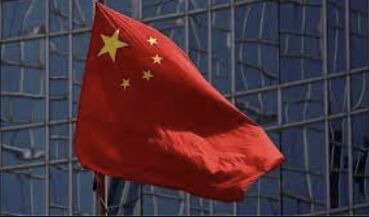China's $9 Trillion Debt Dilemma: Can it Defuse Risks Without Major Bailouts?
The article discusses the challenges China faces in managing its local government debt of $9 trillion without resorting to major bailouts. Failure to do so could result in a prolonged economic downturn. The article highlights the struggles of local government financing vehicles (LGFVs) in generating income to cover their interest payments, leading to a lack of lending and reluctance to buy their bonds. This could destabilize China's financial system and have global repercussions. Beijing has implemented measures such as bond sales and liquidity provisions, but the success or failure of local government debt restructuring will be crucial for China's economic growth.
China is facing the challenge of defusing the risks posed by its $9 trillion off balance-sheet local government debt without resorting to major bailouts. This dilemma requires provinces and cities to roll back their spending and restructure debt without negatively impacting economic growth. Failure to do so could result in a prolonged economic downturn for the world's second-largest economy. At the heart of this issue are local government financing vehicles (LGFVs), which are companies set up to borrow on behalf of provinces and cities.
The government has aimed to make these firms profitable so they can pay off their debts without relying on government funds. However, interviews with employees from six different LGFVs suggest that this effort has not been successful in poorer inland regions. Some LGFVs have struggled to generate enough income to cover their interest payments, leading to a lack of lending from banks and investor reluctance to buy their bonds. This has made it increasingly challenging for these companies to find viable investment projects. The burden of repayment may fall on local governments or banks tasked with lowering interest rates and extending debt maturities, limiting their ability to support economic growth.
The potential default on LGFV bonds, which make up nearly half of China's onshore corporate debt market, could destabilize the country's financial system and have global repercussions. The success or failure of local government debt restructuring will play a crucial role in China's economic growth over the next few years. To address these risks, China's central government has allowed provinces to raise funds through bond sales, which can be used to pay off LGFV debt. While this is only a fraction of the total debt, it has increased market confidence in company bonds. Beijing is also considering using the central bank to provide liquidity to the most strained LGFVs. However, these measures were not the government's initial choice.
Beijing previously planned to inject state-owned assets into the LGFVs to enable them to generate enough cash to service their own debt. This strategy, known as the "market-oriented transformation model," has had limited success in poorer regions lacking sufficient resources. The funding model for LGFVs is under strain due to maturing debt, decreased revenues from local governments, and investor skepticism about government bailouts. Market forces have led to higher interest rates on bonds and loans for weaker companies, making it harder for them to access financing. In some cases, companies are unable to find buyers for their bonds, leading to frozen markets. Infrastructure projects funded by LGFVs have been left unfinished, causing investment losses and impacting economic growth.
The challenges faced by these companies have broader consequences, as LGFVs have been responsible for a significant portion of China's infrastructure spending. To prevent infrastructure investment in poorer regions from collapsing, Beijing has allowed local governments to issue so-called "special purpose bonds" for projects. However, these bond issuances are not growing quickly enough to offset the decline in LGFV borrowing. Economists predict that infrastructure investment in low-return projects will slow over the next decade, leading to a decrease in Chinese growth.
Local governments are under pressure to ensure their LGFVs do not default on bonds, leading to last-minute cash infusions that limit infrastructure spending. In conclusion, China is grappling with the need to address its mounting local government debt. The success of restructuring efforts or potential bailouts will significantly impact China's economic growth moving forward. The central government's reluctance to provide major bailouts puts the burden on local governments and banks, which may limit their ability to support the economy. This situation is a concern for investors and could have global effects.




